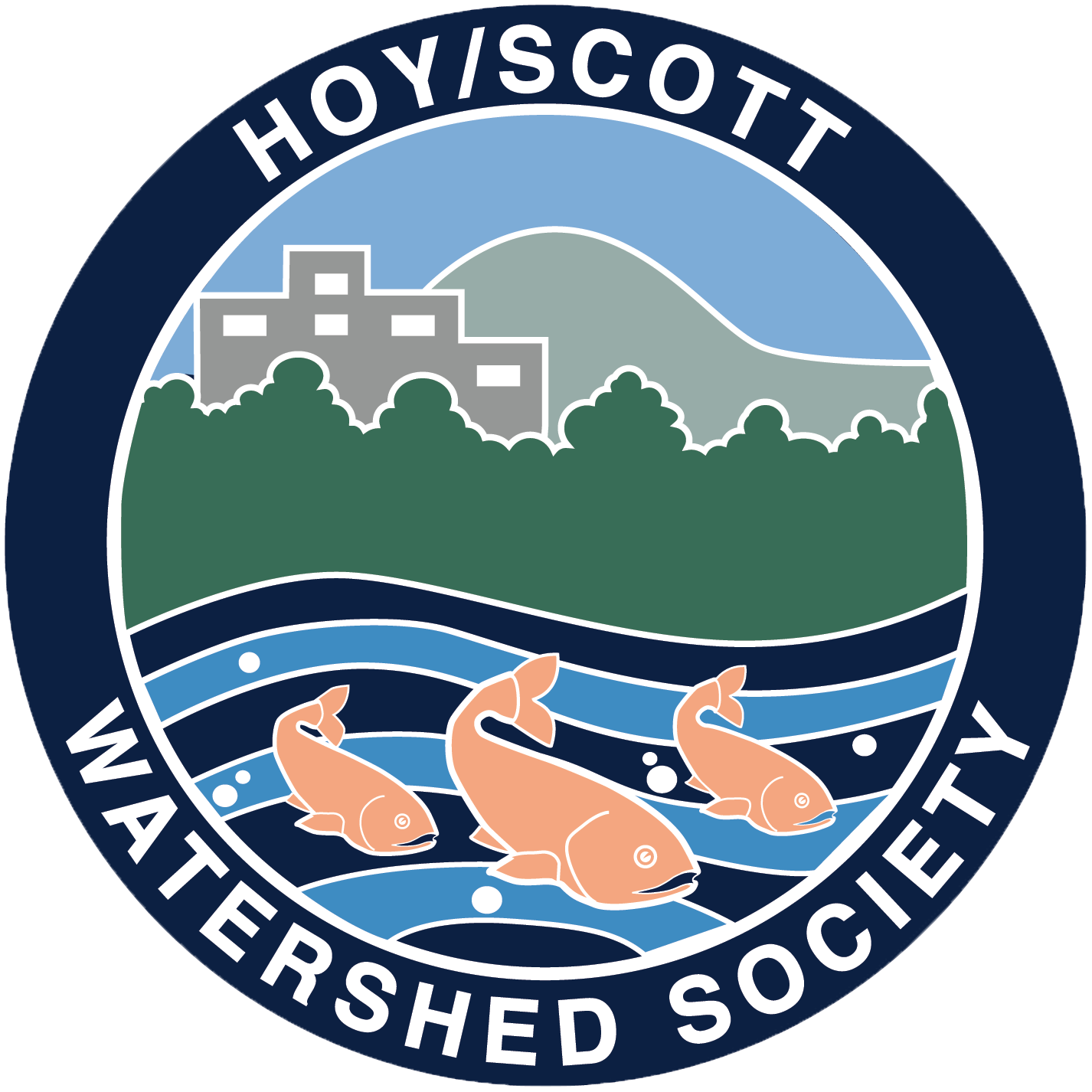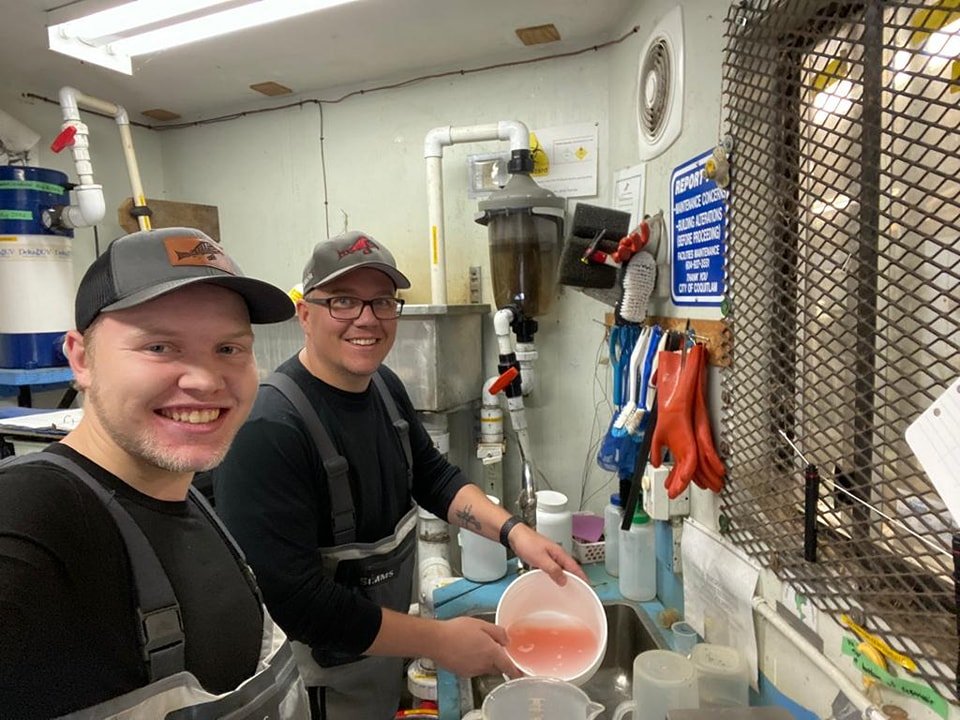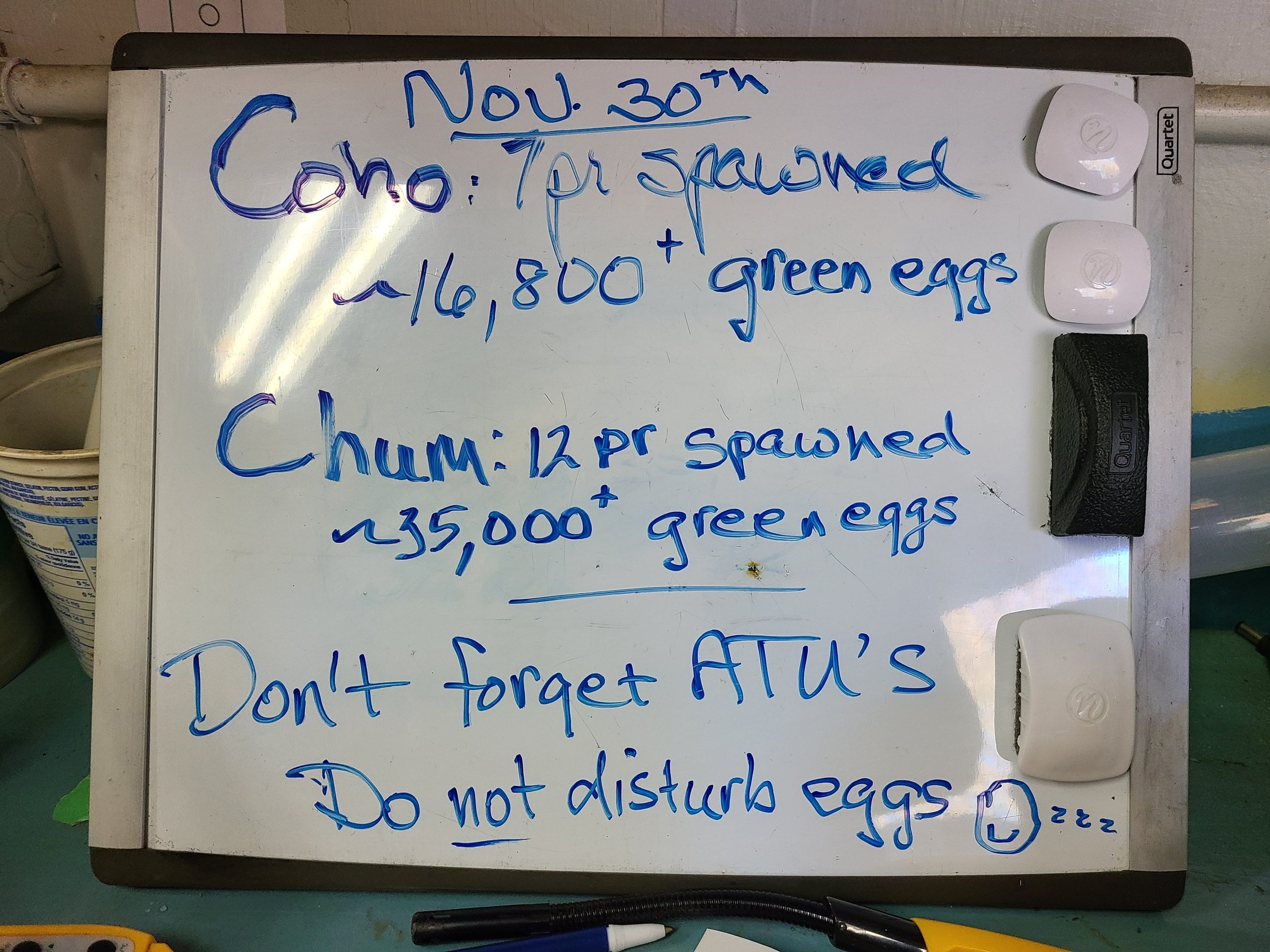Thank you to all the families who came out to enjoy and learn!
On April 27, residents of Coquitlam came to help release our Chum salmon at our Salmon Leave Home festival. Traditionally held around Mother’s Day for the release of our Coho, in 2024 the Society decided to change the focus of the release to the Chum species.
Hatchery manager and Society vice president, Tyler Storgaard explains why, “After significant efforts by our volunteers, we are able to hold both Coho and Chum fry, where previously we had only been able to hold one species at a time. This new capacity and growing concern over drier and warmer conditions earlier in the year had us rethink our release dates for overall fish health. “
Despite the constant rain, the festival was well supported and manageable throughout the day. Children and adults carried buckets of fry down Hoy Trail to a quiet and easily-accessible part of Hoy Creek to release the fish.
Crafts, education, hatchery tour and release of Chum salmon
Residents also got to view Chum fry up close in tanks as well as the Coho fingerlings raised at the hatchery. A scavenger hunt was available as well as the opportunity to make seed bombs to take home and plant to encourage spring flowers for our pollinators.
The Society would like to thank the community who didn't let the weather get in the way! Thanks also goes out to our dedicated and hardworking volunteers.
A huge thank you to our event sponsor, Fish & Wildlife Compensation Program, and for the continuous support of the Fisheries & Oceans Canada.
We hope to see you at our next festival in October for Salmon Come Home!
Tyler, Anne and Suzz helping bucket out the Chum!






